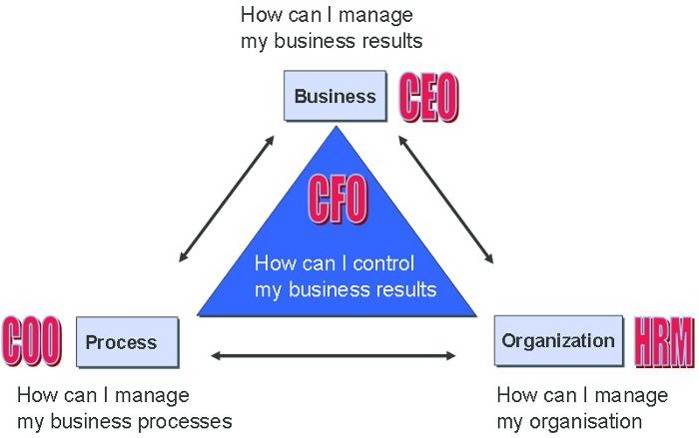Every process manager knows that BPM is not a project but a journey that you take to create a flexible and agile organization that can renew itself like a Phoenix. This journey is dependent on the current situation of the organization (Maturity). To measure the current situation there are many maturity models available on the market like EFQM, OMG, Baldrige, COBIT, and CMMI, Hammer and Gartner. All these BPM maturity models have a lot of commonalities but they also have their own objectives. IDS Scheer has analyzed these maturity models and has developed a holistic BPM framework to capture the strong points of all these maturity models.
The BPM framework is a 4*4 matrix, the horizontal ax consists out of the 4 project phases: Strategy, Design, Implementation and Control. The vertical ax consist out of the 4 driving forces within an organization, which should work together to make an organization flexible: Business Management (CEO), Operational management (COO) Organizational Management (HRM) and Management control (CFO). This results in 16 BPM Process area’s which are required to fully utilize BPM. For every of these 16 BPM Process area’s the BPM maturity can be determined based on CMMI concepts.
Every organization has 4 other domains in which BPM projects are executed; Corporate Performance Management (CPM), IT architecture Management (ITAM) and Governance Risks and Compliance (GRC), Core Application Framework (CAF/SAP). The Enterprise BPM framework can be also used in all these domains, which results in 5 maturity models including the ERP/SAP maturity model (see figure below).
The Enterprise BPM maturity framework can be used for cross domain maturity analysis, BPM benefit and ROI calculations and the implementation of a BPM platform. This BPM platform should be used for the day to day management control of the principles of TQM and BPM maturity models like Baldridge and EFQM. In the next Blogs I will elaborate on the following topics:
- The relationship between maturity levels, ROI and the BPM stakeholders
- The relationship between the BPM process area’s, the required BPM projects and the SAP/ BPM implementation platform
- The relationship between BPM maturity models, BPM governance and the day to day BPM maturity control
I am looking forward towards your reactions!
More information can be found at:http://www.lulu.com/shop/frank-luyckx/enterprise-bpm-roadmap-assessments/paperback/product-20265487.html





hossein jalali on
hello
that's very good
tanks , jalali